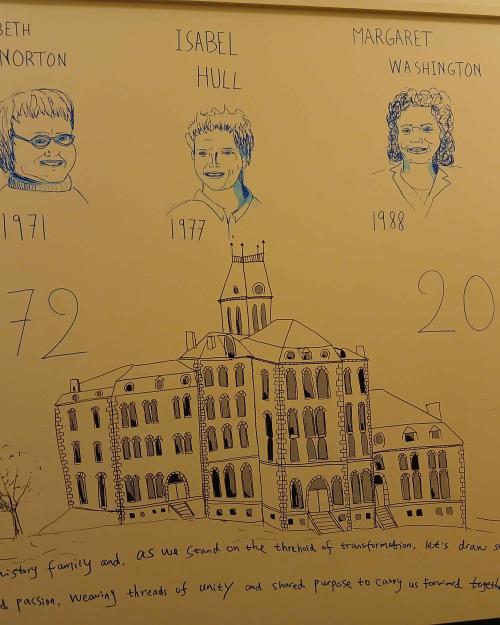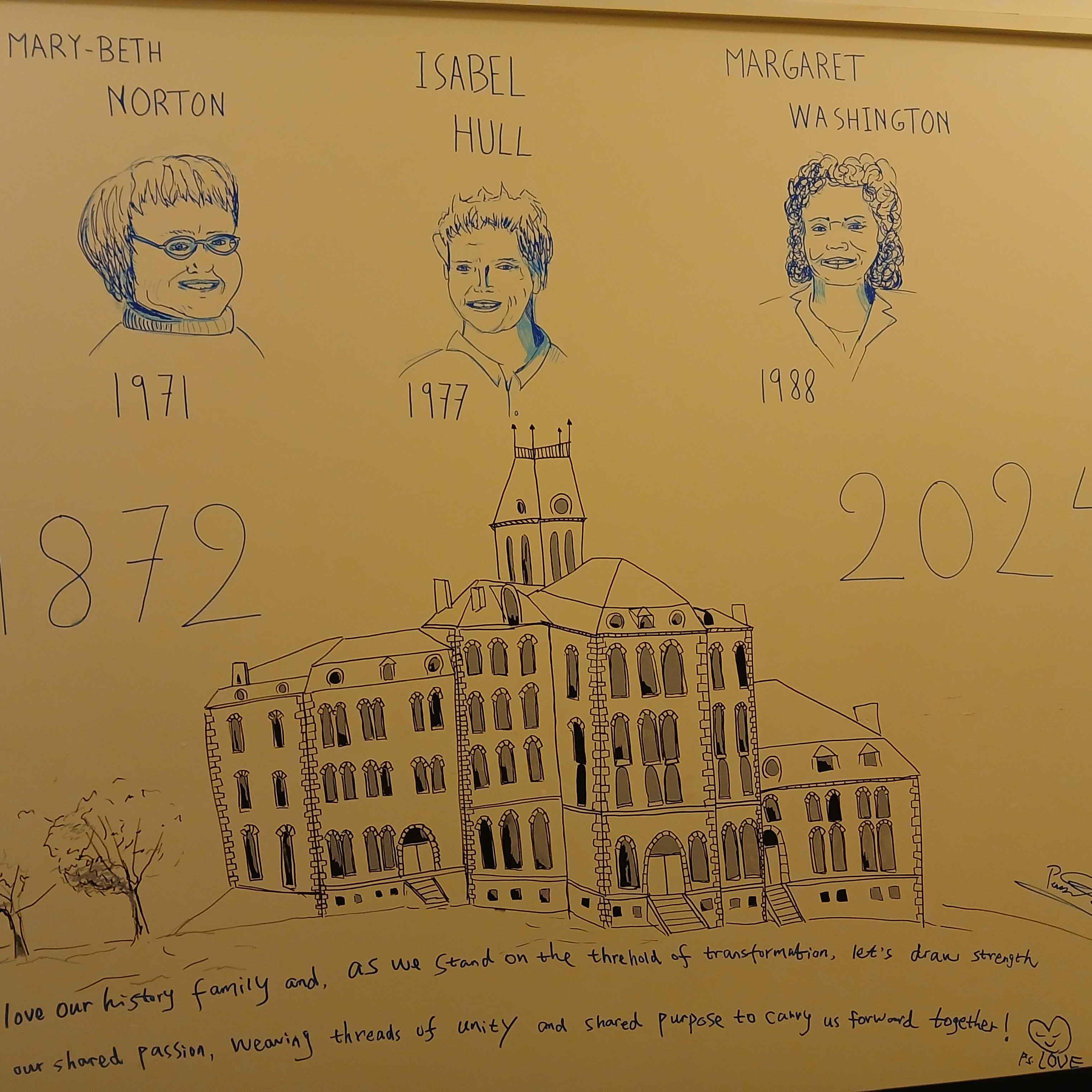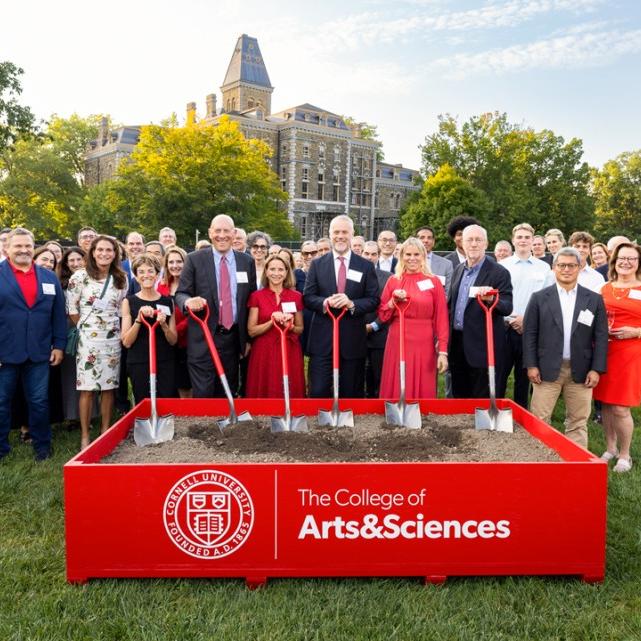





The College of Arts & Sciences has embarked on a massive transformation of McGraw Hall, the centerpiece of the historically significant "Old Stone Row" and home to the history and anthropology departments. This renovation will retain the facade of the original building while reimagining the interiors to inspire and motivate students and faculty for generations to come.
Meaningfully, this renovation will maintain the original stone and façade when the building was first built in 1872, keeping the character and charm of Old Stone Row. But the renovation of McGraw Hall represents much more than just bricks and mortar. It embodies our dedication to the humanities and creating an environment that fosters creativity, collaboration, and progress.
-Interim President Michael Kotlikoff at the groundbreaking ceremy, September 19, 2024
This multi-year renovation project requires renovations to more spaces than McGraw Hall. Work is underway to create space for faculty and staff to work off site during construction and important anthropology collections are moving into Olin Library.

We are proud to announce that we have met our $45M fundraising goal! We continue to fundraise to support the full cost of renovation and continued preservation of McGraw. If you would like to join our alumni and friends in supporting this renovation fund or learn more about naming opportunities, email Dan Watson, Director of Development (drw255@cornell.edu).
McGraw Hall was named for founding trustee John McGraw, who gave $120,000 for construction of the building.
McGraw was a self-made millionaire lumber mogul with a deep reverence for classical education, though he himself never received one. Instead, he committed to realizing this dream for his daughter, Jennie, by sending her on a grand tour of Europe starting in 1859.
McGraw Hall was designed by architect Archimedes N. Russell and opened in 1872 as one of the three original “stone row” buildings on the west side of the Arts Quad.
Built of Ithaca stone, the four-story building was the first on campus to include a tower. Jennie McGraw donated the chimes to be placed in the tower, where they stayed until McGraw Tower was built in 1891.
McGraw Hall was the original location of the university library, until the construction of Uris Library (what was then called the University Library) in 1892. McGraw also at one time housed the university museum, the Wilder Brain Collection, the Plaster Cast Collection, the Lab of Ornithology, the geology department, the law school, the insect collection and the country’s first entomology department, among other departments. The department of government was located in McGraw Hall from 1972 to 2003, when it moved to White Hall.
Today, the building is home to the departments of history and anthropology and the college’s archaeology program.
At John McGraw’s memorial (1877), the tribute referred to the building’s ‘severe beauty’ and ‘solid and massive elegance,’ which the memorialists thought reflected ‘the grander qualities’ of McGraw’s own nature and, presumably, of Cornell’s as well. Piecemeal renovations beginning in the 19th century have nibbled away at the original unity of the building’s design without helping it withstand the ravages of Ithaca’s weather. It is high time to restore McGraw Hall to its former place as the center of the Arts Quad and the symbol of Cornell that it was designed to be.
-Isabel Hull, the John Stambaugh Professor of History Emerita